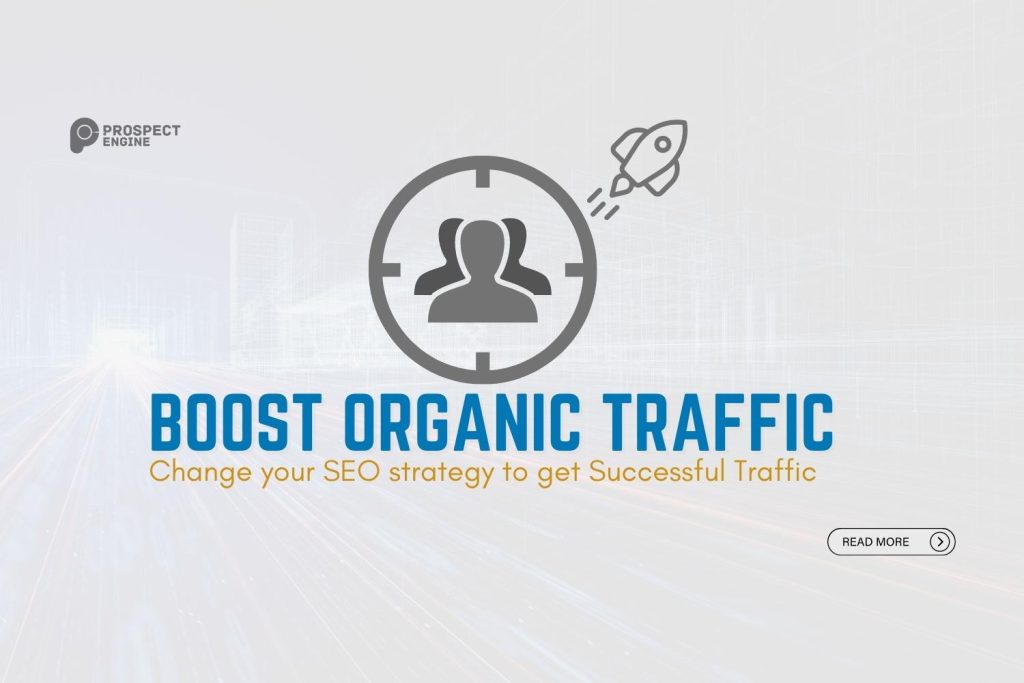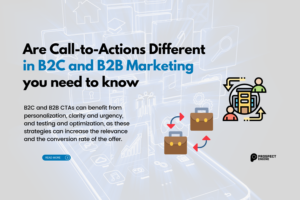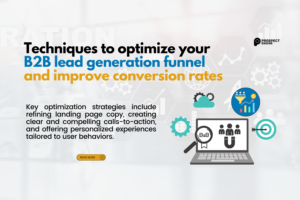Does it feel like the SEO strategies you used once are not yielding much organic traffic? Well, you are not wrong and definitely not alone either! The truth is Google is setting strict standards to analyze and understand web pages.
Recent changes of Google SERPS resulted in fewer clicks and more investment in paid listings for your content. In today’s times, staying at the top of the Google algorithms requires continuous research and experimentation. It can be very challenging! But you need visibility for more traffic, conversion, and revenue. In this handbook, find everything you need to know for increasing organic traffic by the SEO approach. All these techniques have the potential to accelerate your search visits by 85%.
Hacks to generate more organic traffic
The Basic Setup:
In the battle for increasing more organic traffic for your website, it all begins with the basic setup.
Here’s what a basic setup for your content looks like:
-
- Creating a sitemap
-
- Investigation for robot.txt file
-
- Setting up Google Analytics
-
- Setting up Google Search Console
Creating a Sitemap:
Sitemaps tell search engines where to find important content of your website for easy navigation. Basically, it’s a list containing the eminent pages of your website. A sitemap is most beneficial when:
● You have a big website filled with content.
● New to the business
● And, your website doesn’t have a sufficient number of backlinks.
If you don’t want your website to be orphaned in the Google SERPS, start working on your sitemap right now! You can use tools like WordPress or the plugins of SEO Yoast for this purpose. Besides, there are tons of other sitemap generators available on the internet.
Investigation for robot.txt file:
A robot.txt file tells the search engines crawlers not to visit specified pages of your website. Sometimes, you may not want your visitors to land on specific pages or directions on your website. A robot.txt file comes in handy then. This also solves the crawl budget problem of your website. The investigation step is essential for both your website privacy and SEO strategy. You can simply create a robot.txt file by setting up free Google Webmaster Tools. If you are unsure about having a robot.txt file, just type your domain.com/robots.txt (your domain address).
Setting Up Google Analytics:
Next in line, we have Google Analytics for your basic setup. The tool provides the opportunity to track and understand your visitors’ behavior towards your website. Here are some of the reasons to start working with Google Analytics now:
● Gathers all user data
● Customizes your report
● Shows why visitors bounce off from your website
● Integrates with other platforms and tools
● Helps understand which social platforms to target
● Lets you know the modification needed for your website
All these factors can change the user experience and increase the organic traffic for your website. And the Good News? You get them all for free!
Setting Up Google Console:
In today’s time, Google Console is considered the master tool for your website strategy. This tool will let you know all about your website traffic, keywords optimization and show the errors behind indexing. It also assists in building websites for mobiles. You can enjoy a lot more facilities by Google Console apart from all these for your SEO strategy.
And that’s all you need for your basic setup.
Keyword Research:
Increasing your organic traffic depends on your keywords. Here’s what you need to do for getting that spot-on keyword for your content that relates to most people in the world:
● Find the primary keyword.
● Gauge search intent.
● Rummage through relevant queries about your primary keyword.
● Find relevant subtopics and secondary keywords for your content.
● Estimate your chances for Google ranking.
Finding the right primary keyword:
The keyword you decide for your content decides whether or not your website is worthy of generating traffic. An easy hack? Input the keyword into your title, and find an upward slope for your organic traffic.
Another thing, you can do for your website is target long-tail keywords. Long-tail keywords are rigid and have low search volume. It’s clever to use a keyword research tool like Soovle, Jaxxy, Ahref’s keyword explorer, and even Google Console. This gives you an extensive idea about search volumes, keyword difficulties, and various SEO metrics. To sum up, your content needs high-volume and low-competition keywords.
Gauge Search Intent:
Search intent stands for the reason behind the visitor’s query. Google is the best tool for assessing or gauging search intent. After all, that’s where everybody lands up for a question.
All you have to do is type the primary keyword into your search bar. And boom- you find the reasons behind their curiosity. However, assessing search intent doesn’t end with Googling.
You might want to look at the type of content flashing on the first page. Are they blogs, lists, or hybrids? Construct your content based on what audiences want to read with the primary target keyword.
Rummage through relevant queries about your primary keyword:
Why would Google even rank your content if it fails to satisfy user queries? This is why your website should be relevant to what readers want. Fortunately, you have Google at your service to find the questions about your keywords.
Just type your primary keyword and let Google’s autosuggestion do the rest! Jot down every relevant question you see and add them to your content. You can also check the “people also ask” search bar and the “related searches” at the bottom of your pages to find what readers really want! Also, feel free to use the keyword research tools mentioned above for your hunt.
Find relevant subtopics and secondary keywords for your content:
Your website can seem pretty dull unless you input relevant subtopics. On the other hand, you really need to get your hands on some exciting secondary keywords to drive more organic traffic to your website.
Ahref’s keyword explorer continues to be an excellent tool for this purpose. It:
-
- Shows the search volume of your primary keywords.
-
- Find relevant subtopics.
-
- Recommends some splendid secondary keywords for your content.
Estimate chances for Google ranking:
At the end of the day, the target for your SEO remains the same! Standing in the Google SERPS! For this purpose, you really need to find the SEO metrics of the top-ranking pages. Otherwise, all your strategies might end up in smoke.
You can also use keyword explorer tools to find the difficulty score of your keywords between 0-100. Besides, you can use Content Explorer to find content ideas that are easy to rank in the search engine. Then get rolling to build stunning content for your website.
On-page SEO:
On-page SEO is the process of optimizing web pages to generate more traffic. To get the most out of on-page SEO, you need to focus on 3 magical factors:
● Making short but descriptive URL
● Creating compelling title tag and meta description
● Adding relevant external and internal resources
Making short but descriptive URL:
According to study results, short URLs rank better in the Google SERPS than long URLs. Using long URLs for your content is threatening to your SEO strategy.
Want to know how to find the best URL for your content? Just play with your primary keyword! But wait! You should also add an intriguing point to your URL. For example, The URL for ‘How to get more organic traffic can be domain.com/organic traffic/.
Creating compelling title tag and meta description:
Remember how the experts in the industry used to yell- ‘Adding primary keywords in the title tag and meta description are a must!’
However, it’s not true for your SEO strategy today. A recent study showed that primary keywords in title and meta are not considered a pivotal element for Google ranking. The ranking standards remain the same whether you add it or not.
The function of a title and meta description is to ensure more clicks (Clicks=Traffic)! But that doesn’t mean you will be stuffing them with keywords. Sometimes, they can look ridiculous when not blended perfectly. A winning title is enough to boost organic traffic!
Adding relevant external and internal resources:
This is the step where you want to make your website or content bountiful for your visitors. Wait for a second! Are we encouraging you for brand promotions? Undoubtedly, no! We just want your readers to derive the best experience from your content. And all of us know how great user experience translates into more traffic.
On the other hand, websites carrying external resources were seen to rank higher. To make things spicier, add internal links too!
For this, you can type your domain.com with the primary keyword. Then you will be viewing all the related posts from your domain. The step is easy but can cause a colossal impact on your rankings. Besides, you are increasing the chances for discoverability in the hunting eyes of Google.
For best on-page SEO experience, use tools like SEO Yoast, HubSpot’s SEO Tools, etc.
Content Creation:
Next in line for the SEO checklist, we got the most important aspect for increasing organic traffic- content creation! All the methods described above will go into vain unless you start producing high-quality content. Here are the steps for content creation:
● Engaging Introduction.
● Readability Score.
● Ensuring it meets the search intent.
Engaging Introduction:
After deciding upon your winning title tag and meta description, it’s time to structure the introduction. The goal of your introduction should be to let visitors know they are in the right place.
Start with something that relates with the reader and earns their credibility. But don’t make it too serious or emotional. Ensure readers enjoy the introduction when they read it! End the content introduction with a promise to help them by the end of the article. When you fail to engage readers with your introduction, you are chasing them away!
Readability Score:
You can’t expect your readers to read your content if it looks something like this:
Yes, we agree it might contain some pretty cool tips or ideas. Yet, the readability score continues to be zero for the storm you created there! Readers will get overwhelmed and ultimately leave your page! So what to do?
Break down the content into short pieces or short paragraphs. Each para should contain 5-6 lines with 250 words. This will make your content look visually appealing. But wait, there’s more to the story! You can also add images and visuals to lighten the mood! However, don’t stuff the content with every picture you run into. Put some time and effort into fun yet informative visuals.
Unfortunately, that’s not all to enhance the reader’s experience. According to a study, 50% of the US population reads below the 8-the grade level. Yes, you saw that right! When you set higher standards on your word game and content creation, you alienate half of your visitors! Up for a small trick? Just write as you speak and go with the flow!
You can also use the free tool Hemingway Editor to check your readability score.
Ensuring it meets the search intent:
Great content is the one that meets search intent and user queries. If readers aren’t getting feedback from your content, why would they even bother reading it? Also, Google won’t obviously rank them with a higher position.
Suppose we are talking about SEO tips. Readers are intrigued and ready to see some action from the title. Sadly, the content is stuffed with irrelevant information. Naturally, readers will get bored and leave your page. Their plea to see action remains incomplete.
Link Building:
Link building is essential for your outreach. However, make sure you are working with white-hat SEO for link building. All your link-building tactics should meet the guidelines of Google.
Here are the steps for link building:
● Finding prospects linked to competitive pages.
● Guest Blogging.
● Skyscraper Technique.
Finding prospects linked to competitive pages:
Let’s start with finding who is linking to the top-ranking pages of your primary keyword. A good tool for this is Ahref’s keyword explorer that tells you about your prospects from their backlink reports. Content Explorer also continues to be a convenient tool for this purpose.
Guest Blogging:
Yes, we’ve heard it too- “Guest Blogging doesn’t affect Google rankings. It’s dead!” However, after extensive research, it was found that guest blogging still continues to be a sterling technique to generate organic traffic.
Guest blogging brings:
● Increased referral traffic
● More brand visibility
● Backlinks that correlate to rankings
However, it’s a challenge to find websites that will host you. A simple Google search or social media search can solve things for you. Always remember to track and monitor the metrics of your guest blog.
Skyscraper Technique:
The skyscraper technique is a link-building strategy to improve your existing popular content or to replicate the backlinks.
Here’s how to make the most out of the Skyscraper Technique:
● Choose your Skyscraper content
● Paste it on Site Explorer
● Jump to the Organic Keywords section
● Find the keyword that generates the most traffic
● Next, view the keyword difficulty section in Keyword Explorer.
-
- Then get ready to launch your content with the new-found keyword.
That’s how you find the tick for your outreach efforts. When used right, the Skyscraper Technique is expected to increase your organic traffic by 11%.
Technical Issues:
So you have a massive domain brimming with content? But have you checked in for technical SEO yet? Technical issues are a big turn-off for all your websites. Unless you find a quick fix for these problems, you can’t increase your organic traffic.
Here’s what you need to do during the audit:
● Run your website with SEO audit tools.
● Check for page speed.
● Ensure that the site is mobile compatible.
● Fix internal and external broken links.
Run your website with SEO audit tools:
To find all the technical issues, you need to get your hands on some advanced audit tools. Some of them include:
● Woorank
● SEMRush
Check For Page Speed:
There you go folks, Google accepted it! Page loading speed does matter for SEO rankings. Pages with slow loading speed frustrate visitors and eventually compel them to bounce.
Loading speed is affected by unoptimized images, content crowd, flash content, JavaScript issues, etc.
Fortunately, tools like Pingdom, GTMetrix, and Google PageSpeed Insights exist to save the day.
Ensure if the sight is mobile compatible:
Almost 90% of the internet crawlers use mobiles to browse different websites, especially in portrait mode. So not making websites mobile-friendly hampers the overall organic traffic process. Use the free tool to find out whether your website is mobile compatible or not!
Fix internal and external broken links:
When you direct your visitors to broken pages, it results in a terrible user experience. Honestly, no one likes to be pushed on ‘the error 404’ glitch! You can use Ahref’s Site Audit tool to find the broken links within your content.
These are all you need to do to generate more traffic by the SEO approach. We admit it’s a lot of work, but everything gets easy with time!
Summing Up:
Surely, the path for increasing organic traffic by SEO approach is difficult and time-consuming. You may not see success instantly, but someday you will. We believe these strategies are surefire ways to engage more audience and boost organic traffic.
Are you ready to change your SEO strategy for successful changes in your pipeline?






